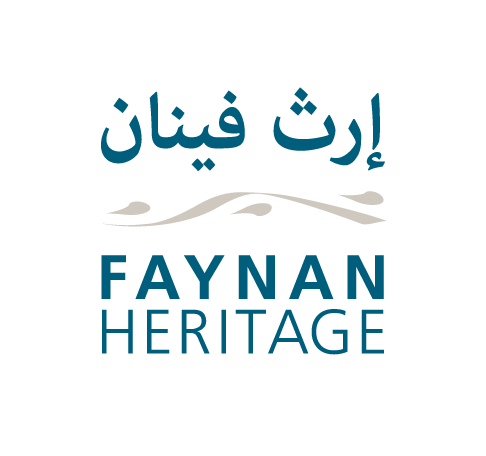A Visit to Faynan Museum
Faynan Museum is located on the outskirts of Faynan Village and contains information about the landscapes, bird life, archaeology, history, and culture Faynan.
It has two floors. The lower is a public gallery with display of artefacts, maps and information, while the upper floor contains storerooms and research facilities. The museum curator is Ali Hasasen.
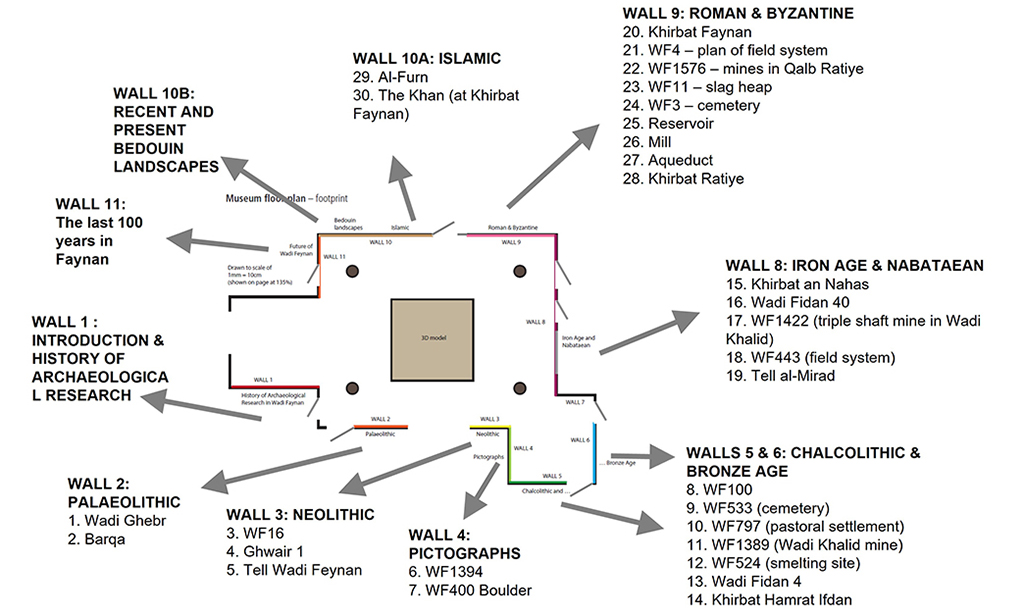
Floor plan of the museum showing wall displays
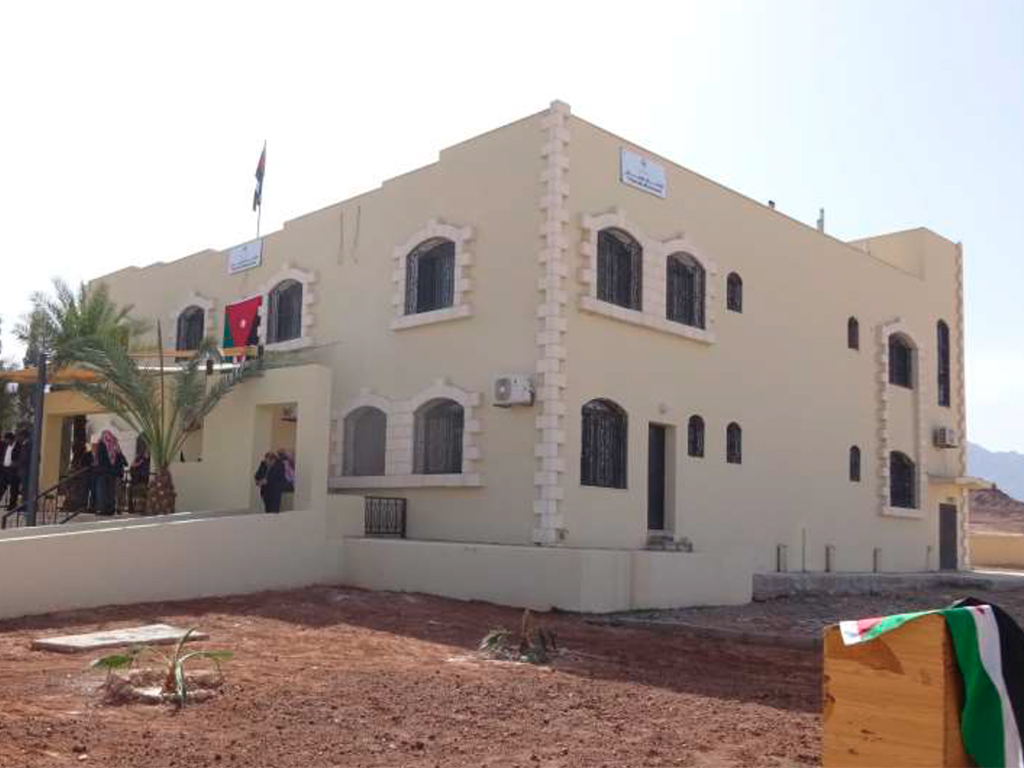
Faynan Museum
The model of Faynan
The centre piece of the museum is a three-dimensional model of the Faynan landscape. This shows how Wadi Dana and Wadi Ghwayr cut their way down from the Jordanian highlands and merge to create Wadi Faynan which then cuts the through the desert landscape to eventually become Wadi Fidan and flows across the plain into Wadi Araba. The villages of Gregara (variously spelt as Gregira, Gurygirah, and Quarayqira), and Faynan and located on the southern side Wadi Faynan. Thirty archaeological sites are marked with red labels, each relating to a panel on the surrounding wall. These are a just a sample of the known archaeological sites in Faynan, selected to represent the story of its settlement from the time of the earliest Stone Age hunter-gatherers of 500,000 years ago, through the emergence of farming, start and massive development of copper mining that reached its zenith in the Roman period, followed by Ottoman period and development of the modern-day landscape.
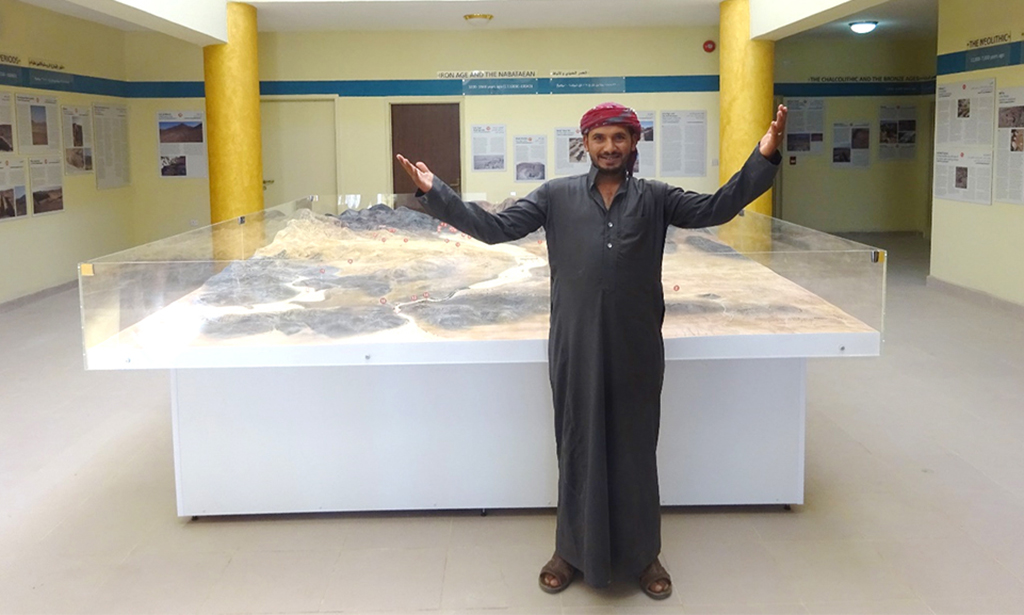
Ali Hasasen, Curator at the Faynan Museum, in front of the 3D model of Faynan
Wall displays and display cabinets
The thirty sites are described in chronological order around the walls of the museum, with text in Arabic and English. There are two display cases with artefacts from Faynan.
The first contains the earliest stone tools found in Faynan. These are made from flint and known as ‘handaxes’. Either pointed or ovate in shape, they had been used to butcher animals, cut plants, work wood, and dig for roots by Stone Age hunter-gatherers. The second display cabinet has artefacts from the Neolithic site of WF16, that dates to between 12,000 and 10,000 years ago. This was a settlement of hunter-gatherers who were beginning to experiment with cultivation cereals that was part of the process that led to farming lifestyles. As represented in the display case, a wide range of tools were made, including points made from flint and bone and bowls carved from stone. Shell and stone were used to make beads, some of which were likely stitched to clothing. The case contains a small human faced carved from stone, animal figurines and a beautiful, polished stone baton, the function of which is entirely unknown. It is hoped that the Jordanian Department of Antiquities will provide additional display cabinets that will contain artefacts from the Bronze Age, Iron Age, Roman, Byzantine and Ottoman periods of activity in Faynan.

Artefacts from the Neolithic site of WF16 within the display cabinet
The Birds of Faynan
Between the wall displays about the Neolithic and the Bronze Age, a small room contains wall panels and a display case about the birds of Wadi Faynan. Almost 200 species of birds have been seen in Faynan.
Forty-two of these being resident all year round while the others are seasonal visitors or pass through Faynan during their spring and autumn migrations. More than 18,000 bird bones were excavated from the Neolithic sire of WF16, showing the bird life had been even more diverse, containing species that are now extinct such as the Northern Bald Ibis. With the expansion of farming and building of roads, natural habitats in Faynan are being destroyed, reducing those available for birds.
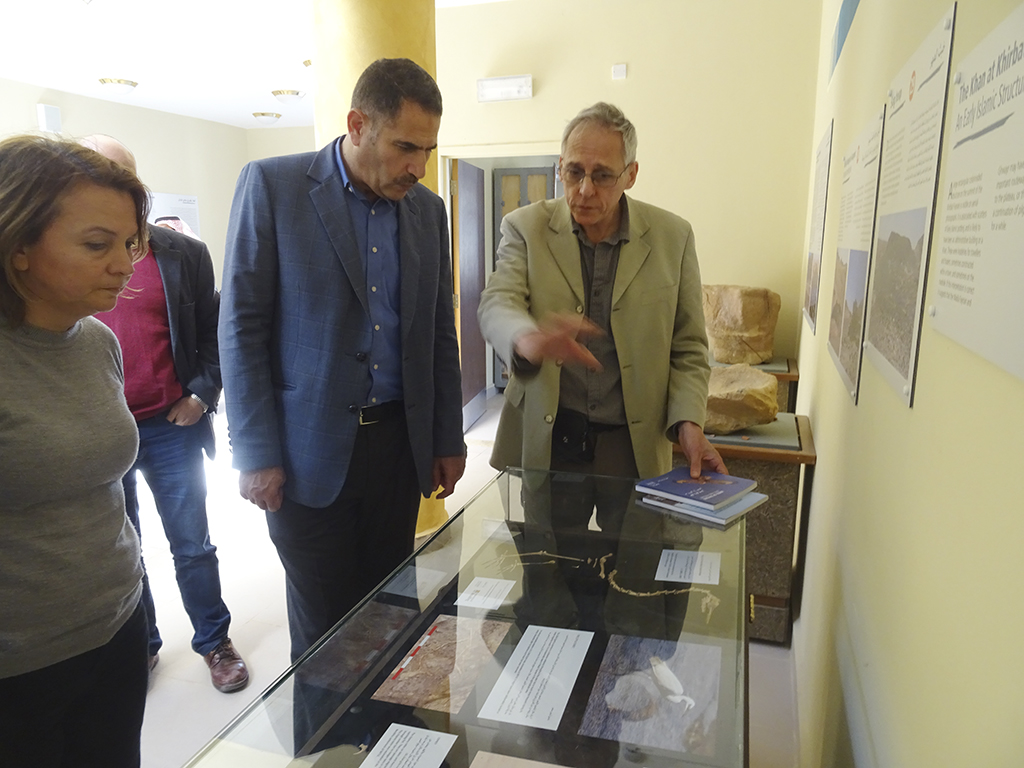
Steven Mithen showing the Director-General of the Department of Antiquities, the bird bone display cabinet
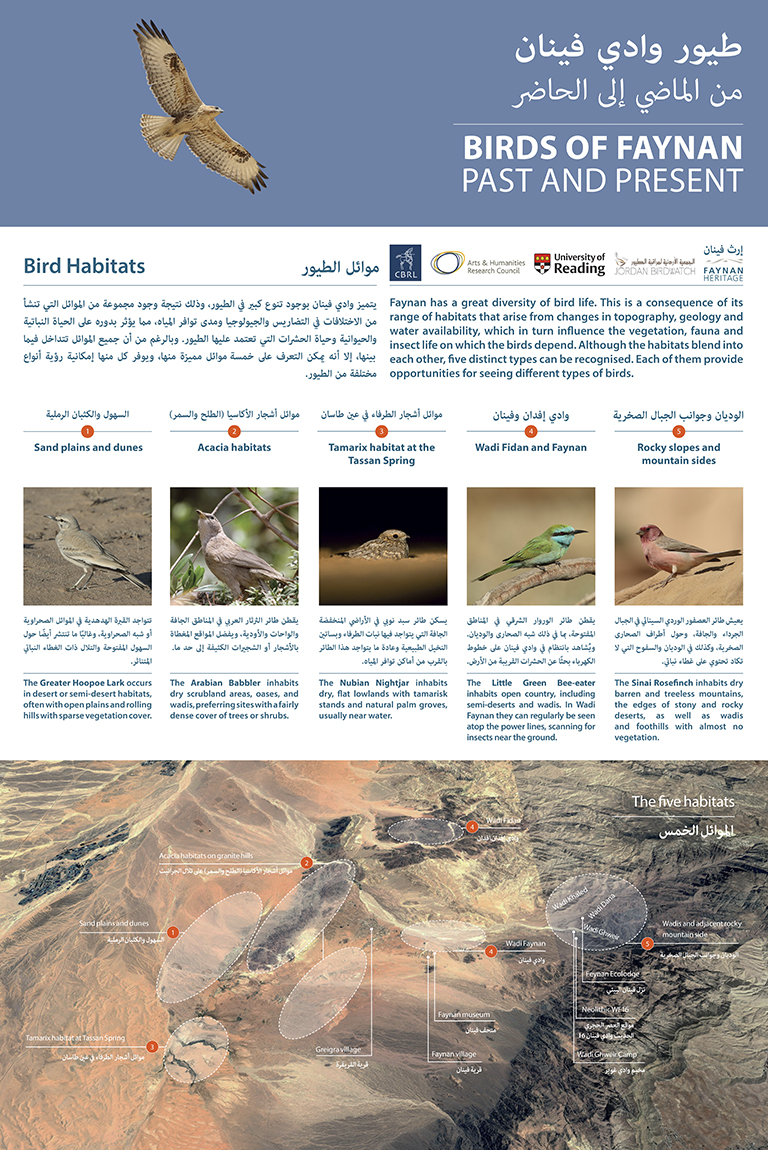

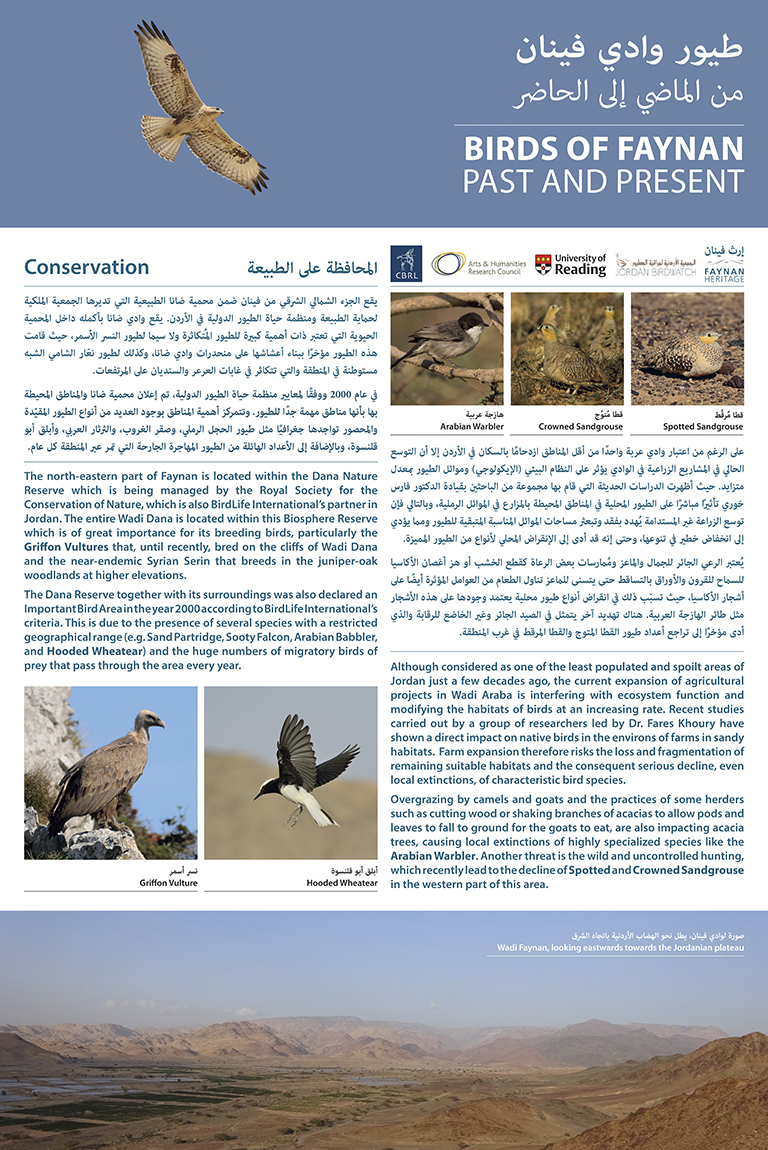
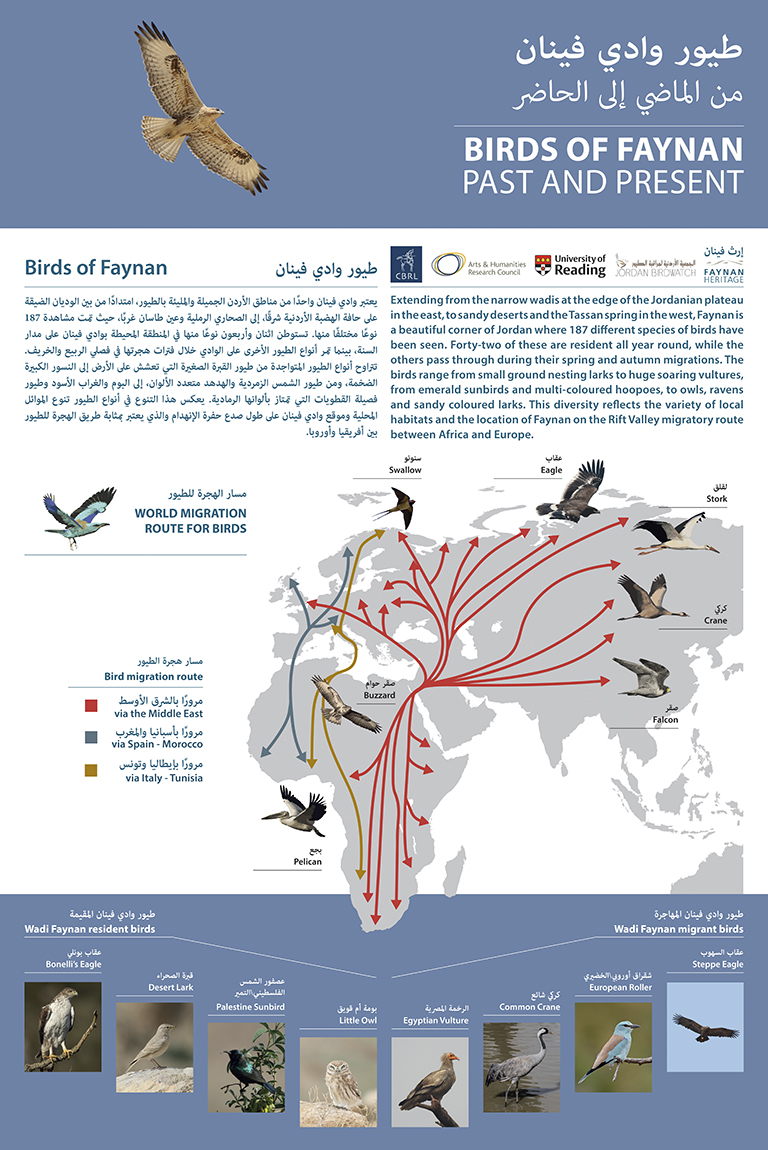
The wall hanging
Above the displays about the Roman and Byzantine periods, the wall slopes over landscape model towards the roof. This will be covered by a textile wall hanging, designed, and made by Bedouin women from Gregera and Faynan with the support of artists from the UK. As I write (March 2022) the wall hanging has been completed but has yet to be installed.

The wall hanging on display on an external wall of the museum prior to installation inside
The last 100 years in Faynan
The wall panels in the main room end with the Ottoman period of settlement, but the history of Faynan is continued in an adjoining room where the last 100 years of history is described.
This covers the formation of Transjordan in 1921 as part of the British Mandate and Jordan’s independence in 1946. Key events in the history of Faynan were the arrival of Bedouin tribes in Faynan, the 1976 founding of Gregara the construction of the first school for the Bedouin in 1989, and the development of farming by irrigation as from 1996. The last of these has dramatically changed the landscape, with new irrigation ponds and field for tomatoes and melons, many of which are covered with plastic. Most of the Bedouin have left their traditional transhumance culture behind and become permanently settled in houses. But many tents remain, and the exhibition describes how the tent was and remains at the core of Bedouin life. A range of Bedouin foods and crafts are described, and some traditional items of Bedouin culture exhibited.

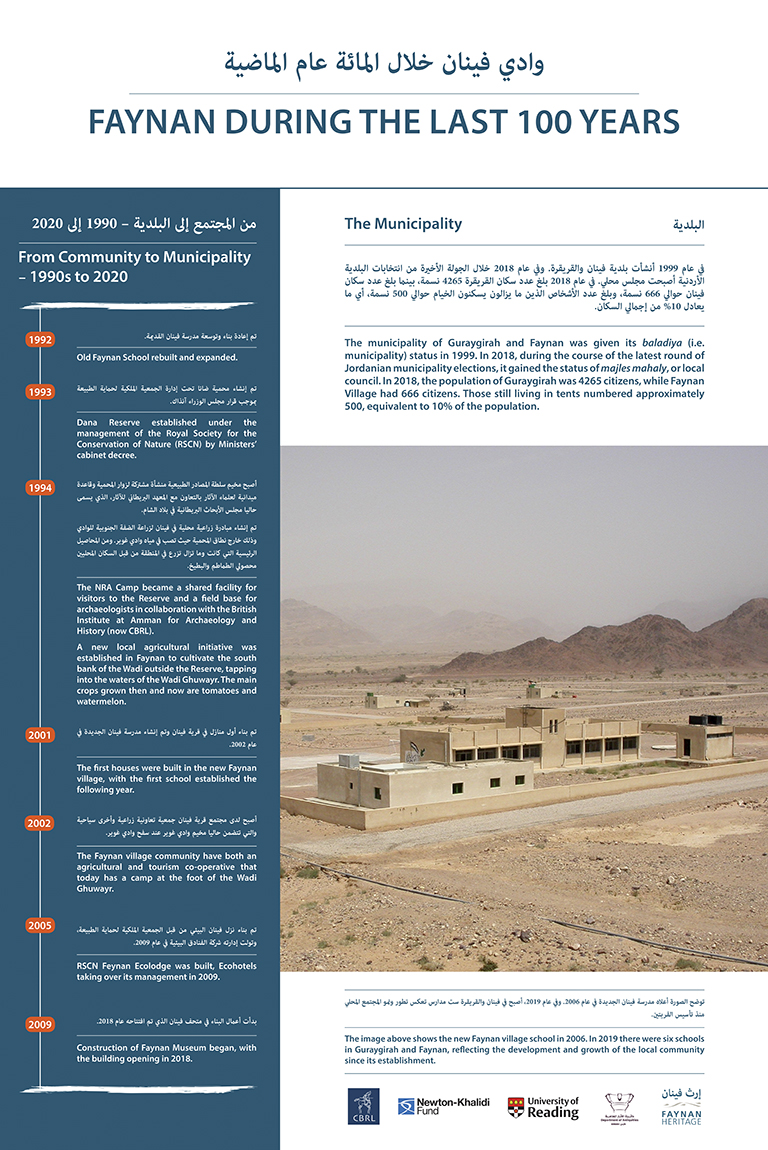
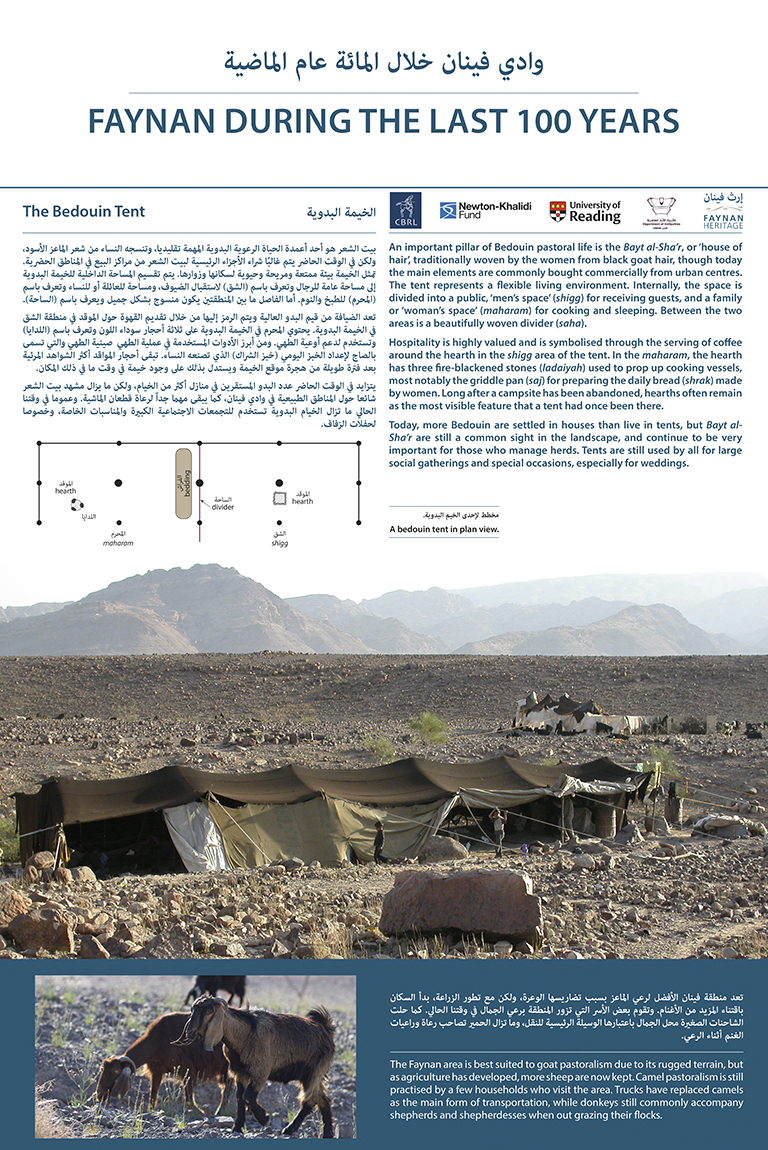

Faynan Heritage Home
Elsewhere in this room there is a display about Faynan Heritage Home.
This is a small business established in Gregera and Faynan, owned and managed by Bedouin Women of the Faynan Heritage Women’s Cultural Association (IFHWCA). It was established to design and produce high quality handicrafts to sell to tourists visiting Faynan to generate income for the women’s families. To find out more information about visit here.
Activities in the museum and resources of children’s learning
The museum provides space for meetings, talks and activities. These have included visits by children from the local schools to learn more about their landscape and cultural heritage.
To help them learn about archaeology just as archaeologists must do, and an opportunity to make their own mosaics. Two books have been produced to support their learning – one about the history of Faynan covering hunter-gatherers, farmers and copper miners, and the other a story book about how the museum magically comes to life, transporting the children to prehistoric times.
You can download the book here: The Story of Faynan, from a million years ago to the present
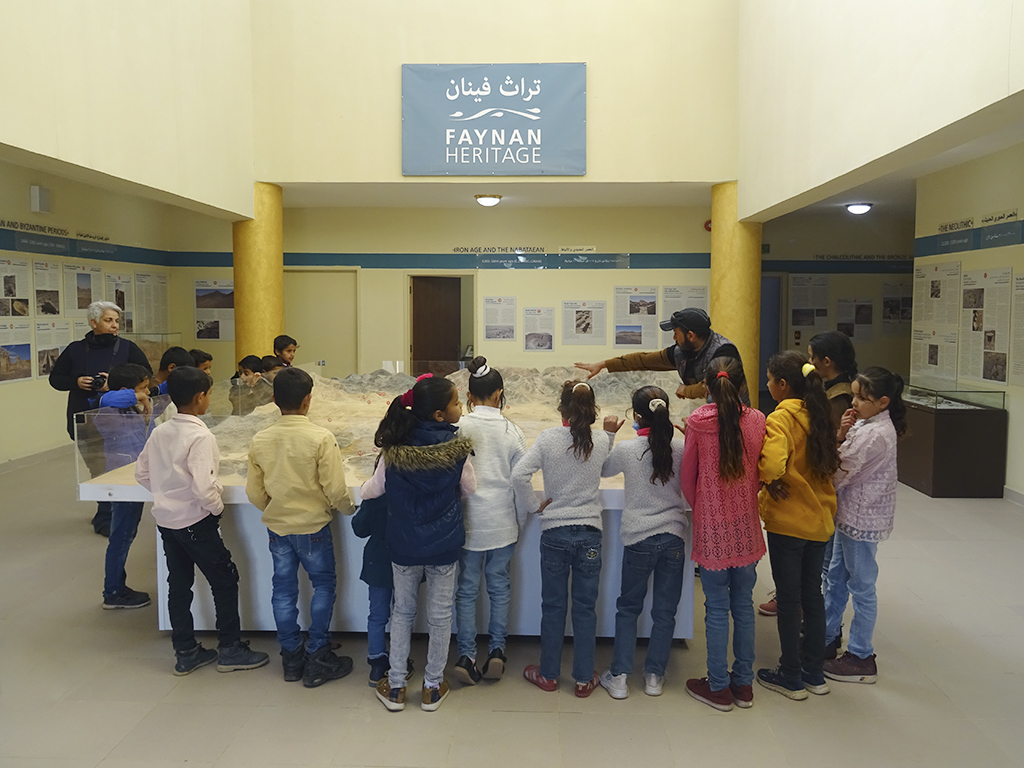
Fayan children on a school visit to the Museum, being shown the Fayan landscape by Ali Hasasan

Fayan children on school visit to the Museum, being shown the Fayan landscape by Ali Hasasan
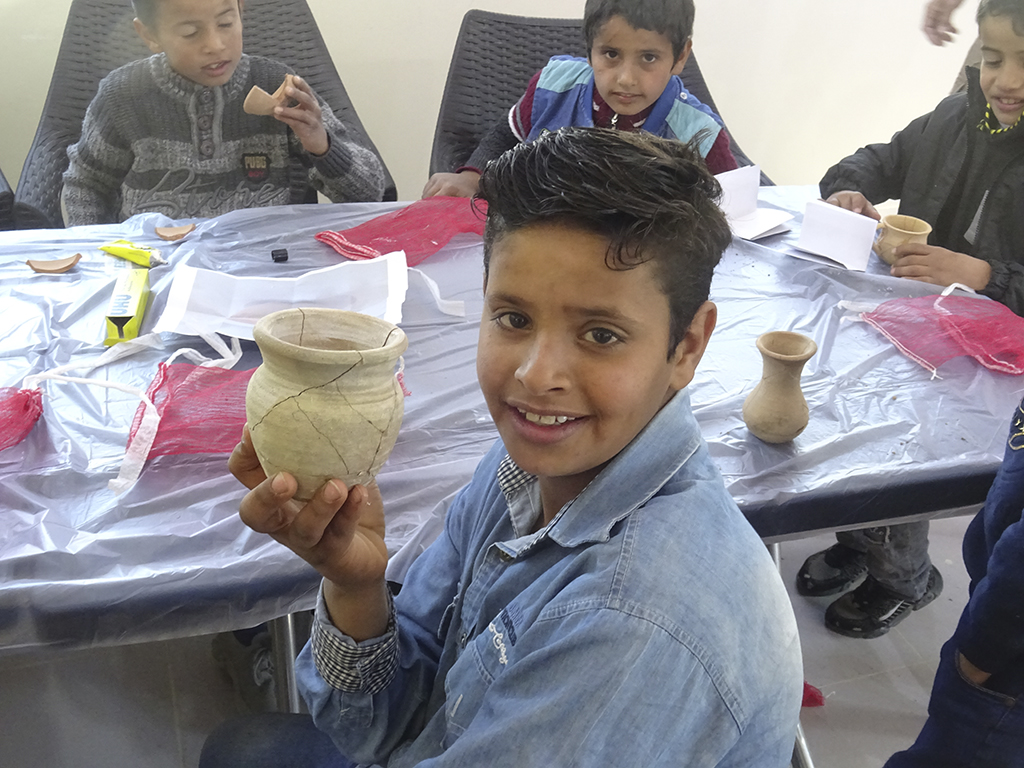
Children’s activity in the museum – a complete pot
